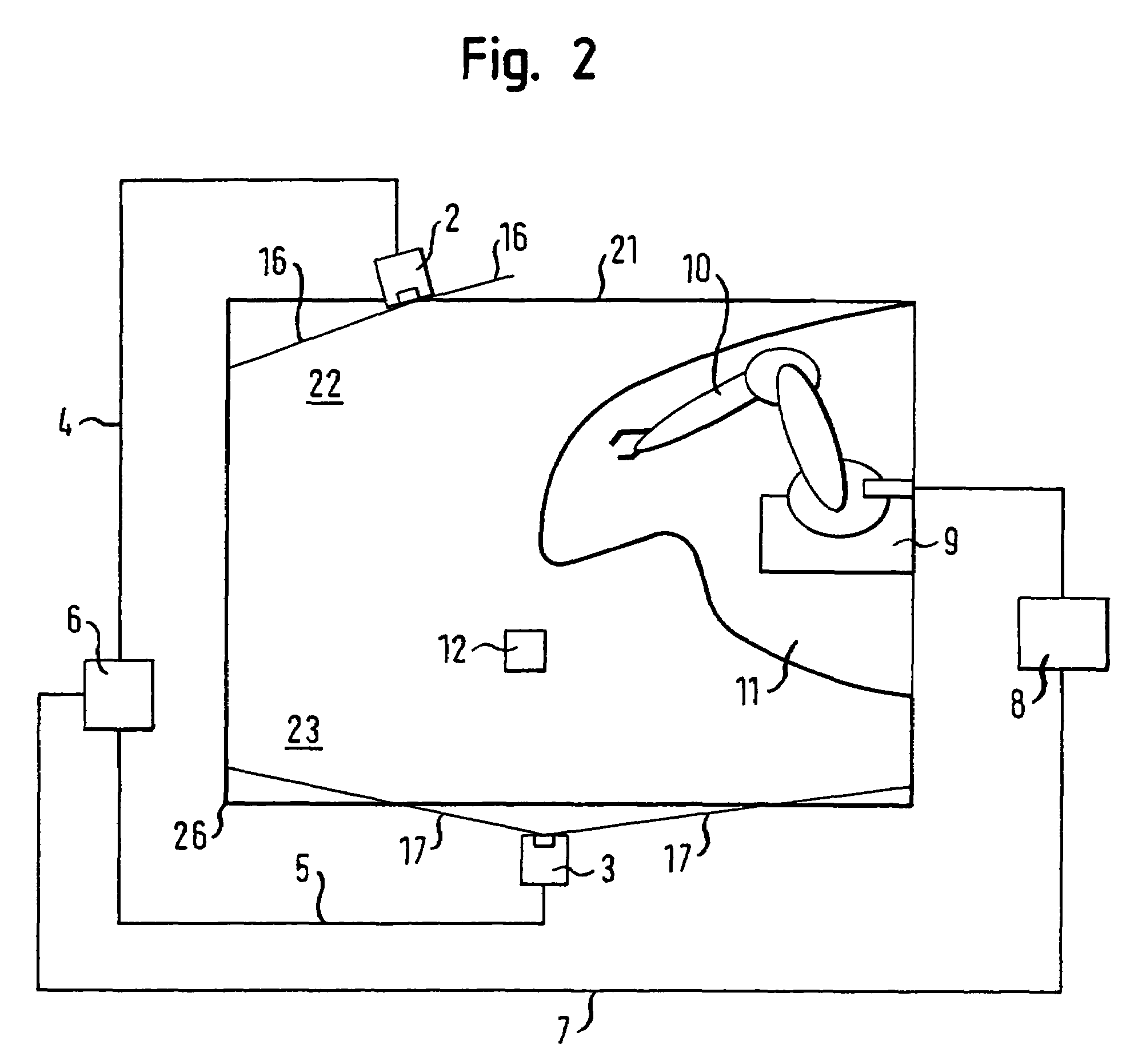Method and apparatus for detecting an object through the use of multiple sensors
a technology of multiple sensors and objects, applied in electrical apparatus, instruments, surveying and navigation, etc., can solve the problems of inability to differentiate, inability to compute the computing time effort in the evaluation unit for the required coordinate transformation, and inability to free define the protected zone inside the monitored space. , to achieve the effect of reducing the computing effort in the processing of pictures, reducing the load of the evaluation unit, and increasing the process speed
- Summary
- Abstract
- Description
- Claims
- Application Information
AI Technical Summary
Benefits of technology
Problems solved by technology
Method used
Image
Examples
Embodiment Construction
[0031]The following description of the preferred embodiment(s) is merely exemplary in nature and is in no way intended to limit the invention, its application, or uses.
[0032]FIG. 1 shows a monitoring apparatus 1 in accordance with the prior art with area scanners 2, 3 designed as laser scanners which are each connected to an evaluation unit 6 by leads 4, 5. The evaluation unit 6 is connected via a further lead 7 to a machine control 8 of a machine 9 designed as a robot and including a movable robot arm 10. A safety-relevant function of the machine control 8 can be triggered, for example the machine 9 switched off, by the evaluation unit 6 via the lead 7.
[0033]A danger zone 11 which is monitored by the sensors 2, 3 is defined by the movement of the robot arm 10. Objects intruding into the danger zone 11 can be put at risk by the movements of the robot arm 10 so that an intrusion of this kind must, for example, result in a switching off of the machine 9 by the evaluation unit 6. In FI...
PUM
 Login to View More
Login to View More Abstract
Description
Claims
Application Information
 Login to View More
Login to View More - R&D
- Intellectual Property
- Life Sciences
- Materials
- Tech Scout
- Unparalleled Data Quality
- Higher Quality Content
- 60% Fewer Hallucinations
Browse by: Latest US Patents, China's latest patents, Technical Efficacy Thesaurus, Application Domain, Technology Topic, Popular Technical Reports.
© 2025 PatSnap. All rights reserved.Legal|Privacy policy|Modern Slavery Act Transparency Statement|Sitemap|About US| Contact US: help@patsnap.com



